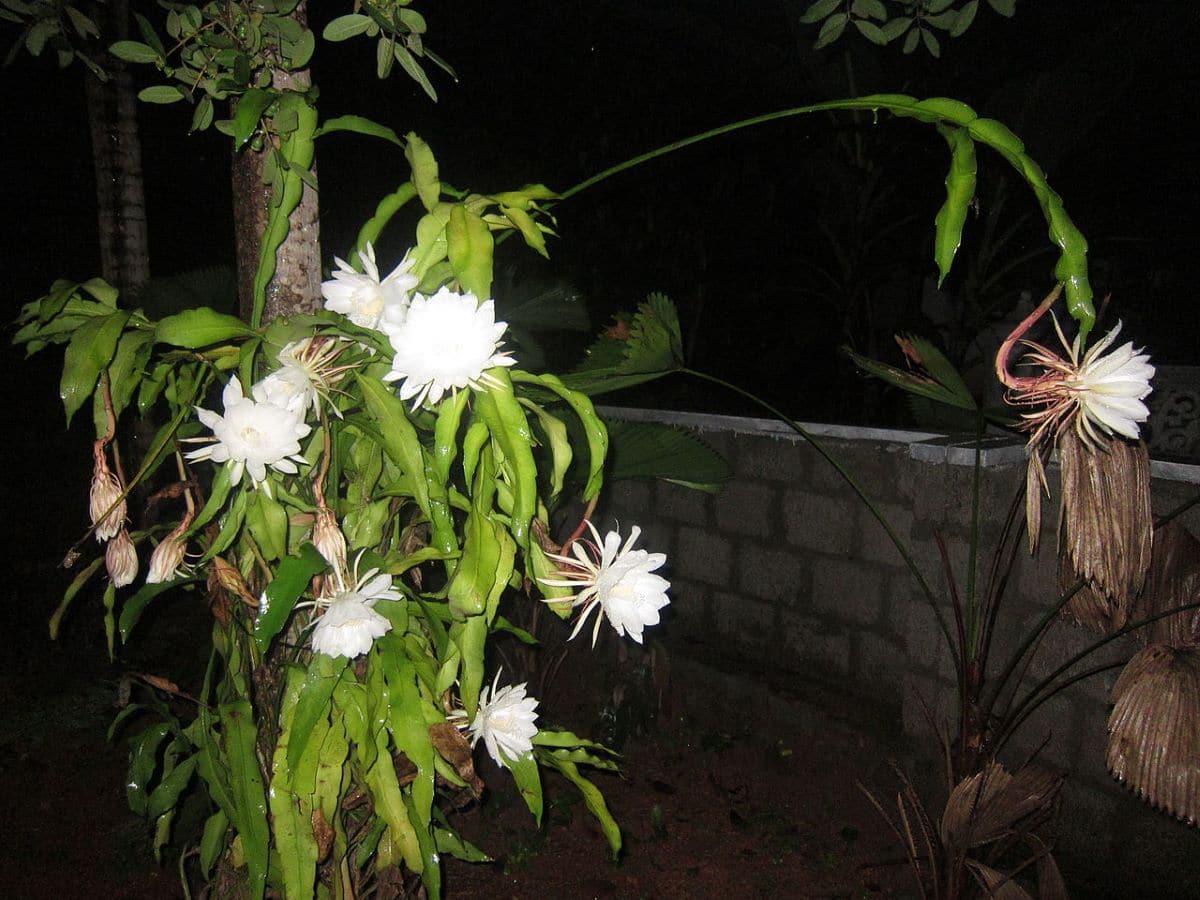
Image - Flickr / Resenter1 // Astrophytum myriostigma
When we think of cacti, a plant with more or less long thorns immediately comes to mind. But what we can ignore is that there are species and cultivars that do not have any spines, or that if they do, they are so short that they are completely harmless.
Would you like to know which ones are they? Well Here we show you the cactus without thorns that you can collect without problems even if there are children and / or pets at home.
Astrophytum asterias

Image - Wikimedia / Petar43
El Astrophytum asterias, known as the star cactus, is a species that grows about 5 centimeters in height by 10 centimeters in diameter. It is, therefore, a plant that can be grown in a rather small pot, although it also works very well in a rockery along with other small plants. It does not have thorns, but it does have flowers that bloom in late spring or early summer. These are yellow and measure 6,5 centimeters in diameter.
Depending on the variety and cultivar, it can have a lighter or darker green body, and / or with or without white dots. These little spots or spots vary in size and distribution. In any case, it is a cactus that you have to place in a sunny area, and with light soils that drain water well. It supports mild frosts down to -2ºC.
Astrophytum myriostigma

Image - Wikimedia / Guillermo Huerta Ramos
El Astrophytum myriostigma It is a cactus known as a bishop's bonnet that does have thorns, but they are very, very short that they barely protrude from the plant. It has a rounded shape, and the green body is usually covered with white dots. It grows to a height of 10 centimeters and a diameter of up to 20 centimeters. The flowers sprout at the top, are yellow in color and appear in spring or summer.
There are several very interesting varieties, such as the Quadricostatum, which has four prominent ribs, or the Nudum, which lacks spines. It is a plant that has to be put in a place exposed to direct sunlight, and water very little. Supports up to -2ºC.
Echinopsis subdenudata
- Image - Wikimedia / Petar43
- Image -Wikimedia / Petar43
El Echinopsis subdenudata It is another prickly cactus, but its spines are barely 2 millimeters long so they are not very visible; in fact, they don't always sprout. It has a globular body, with a height of 10 centimeters and a diameter of 7-8 centimeters. It is dark green in color, and has areolas with short, woolly white hairs. The flowers appear during spring and summer, they are white and are up to 22 centimeters long by up to 8 centimeters in diameter.
It is a very common variety in collections and gardens, that does not require much care and that multiplies well by seeds if you have two specimens blooming at the same time. Withstands cold and occasional frosts, down to -1,5ºC.
Epiphyllum oxypetalum

Image - Wikimedia / കാക്കര
El Epiphyllum oxypetalum or lady of the night, is a type of epiphytic spineless cactus that develops flattened stems, green in color. These can be about 1 meter long, and large white flowers emerge from their areolas. These flowers are 25 centimeters in diameter, so they are one of the largest of the entire Cactaceae family. In addition, they are very aromatic, but they open at dusk in spring-summer.
It grows fast, and you can have it both in a pot or in the garden next to a tree. But yes, keep in mind that it needs light. It can be both in a sunny area and in semi-shade. It does not support frost.
Hatiora gaertneri

Image - Wikimedia / Kor! An (Корзун Андрей)
La Hatiora gaertneri, known as Easter cactus, is a shrubby species that develops hanging stems of green color and with a length of 70-80 centimeters. It is a type of cactus without thorns, which nevertheless produces beautiful flowers in spring-summer. These are scarlet red, and measure between 4 and 7 centimeters in diameter by 4 centimeters long.
You have to put it in a bright place, but it is preferable to avoid direct exposure to the sun as it can burn, especially during the central hours of the day. It supports the cold, but not the frost.
Rhipsalis baccifera

Image - Wikimedia / Salicyna
Known as cactus mistletoe or Rhipsalis baccifera, it is a most curious hanging cactus: develops cylindrical green stems without thorns up to 1 meter long. For this reason, it is widely used as a hanging plant, either in a pot hung from the ceiling, or on a balcony. It grows at a relatively fast rate if the weather is warm, and blooms in spring.
Unlike other species, you have to put it in semi-shadow. You could also put it in the shade, but it is important that if you opt for the latter, you take it to an area where there is a lot of light. Of course, if the temperatures drop below 0 degrees you should put it at home.
Schlumbergera truncata

Image - Flickr / Steven Severinghaus
La Schlumbergera truncata, known as Christmas cactus, is a kind of cactus without spikes that, like the previous one, is also used as a pendant. It develops flat, green stems with a length of up to 1 meter. It is a plant that blooms in winter, and it does so by producing white, pink or red flowers.
It must be put in shade or semi-shade, although it is also adapted to living indoors if it is placed in a room where a lot of light comes in from outside. It is very sensitive to cold; Furthermore, if the temperature drops below 15ºC, it will have to be protected.
Do you know other cacti without spikes? What do you think of the ones we have shown you?

